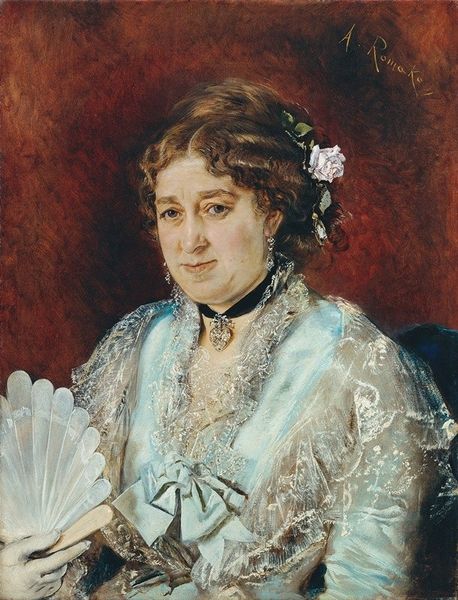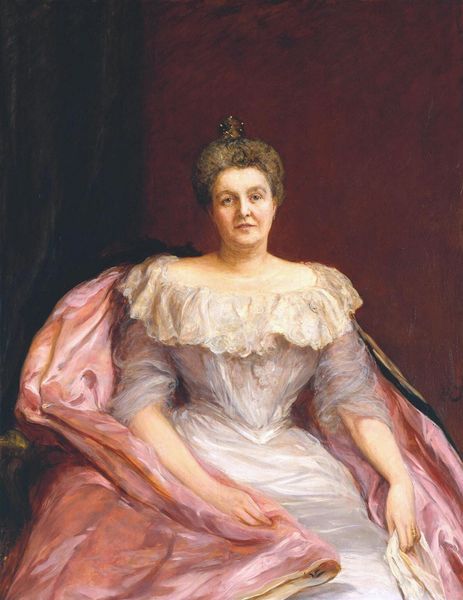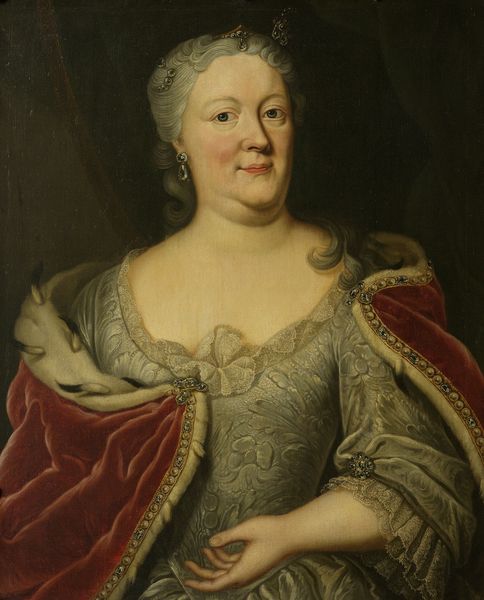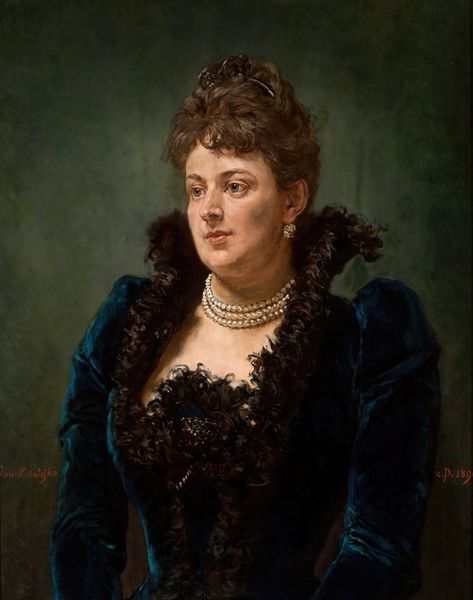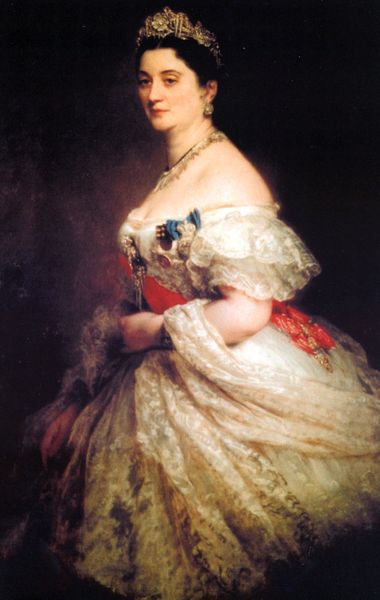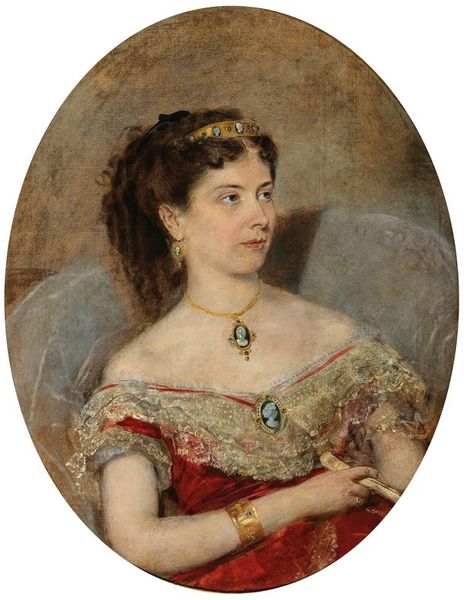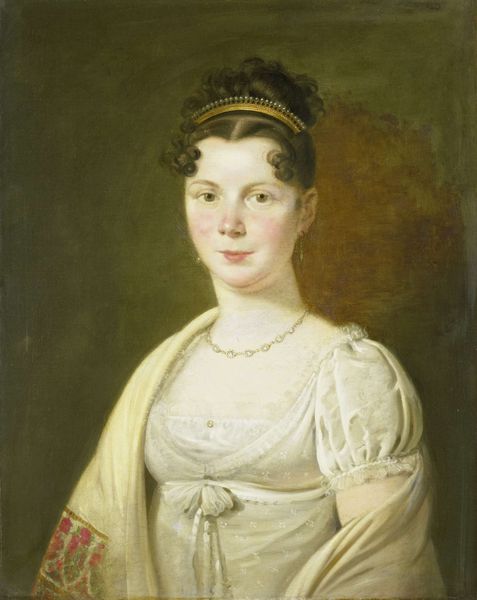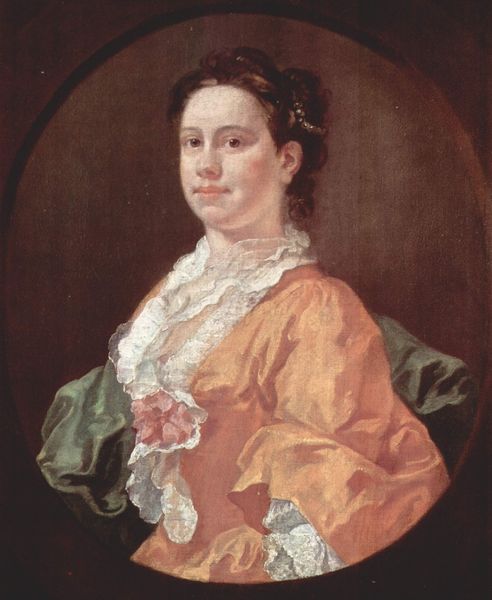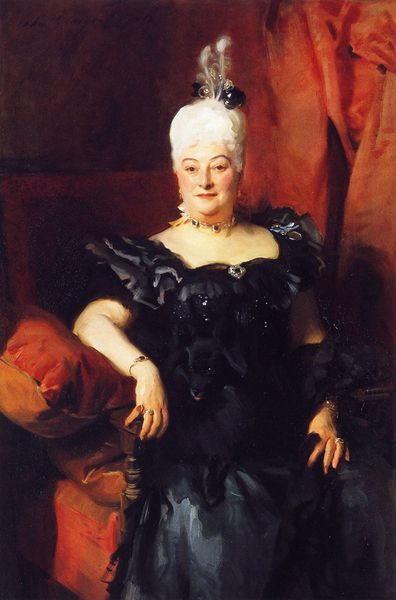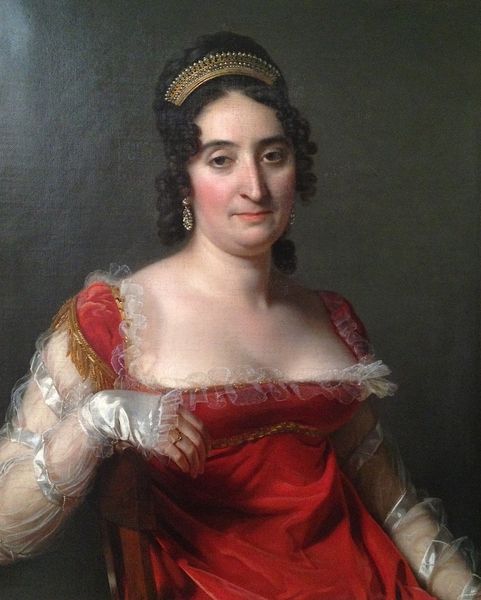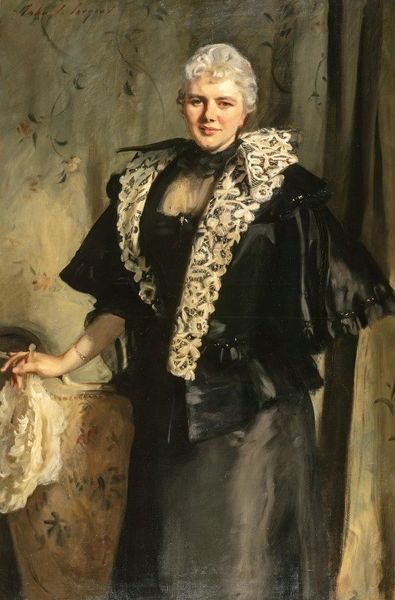
painting, oil-paint
#
portrait
#
painting
#
oil-paint
#
oil painting
#
academic-art
#
realism
Copyright: Public domain
Curator: Take a look at Ivan Mrkvicka’s “Portrait of Amalia Gavrilova,” completed in 1896 using oil on canvas. What's your first take? Editor: There’s an air of stately composure to the piece. The subject exudes this quiet strength, almost like she's a pillar holding up some unseen edifice. Curator: Absolutely, and understanding the socio-political backdrop is essential. Mrkvicka was deeply involved in promoting Czech culture through art, particularly at a time when Czech national identity was being shaped. Commissioning such portraits allowed artists to assert cultural pride and to visualize local elites. Editor: That’s clear in how she’s presented. Not as a delicate flower but as a matriarch. Look at the almost architectural quality of her dress, its heaviness. There's a subtext of societal expectation there too. Curator: The dress is really representative of late 19th-century fashions. The high bust line, the large sleeves... Mrkvicka uses meticulous brushwork to show the detail of the lace and the shine of the satin. Editor: The roses add another layer. Typically symbols of beauty and love, but placed there, they feel more like props, adding to the performed image of a woman of stature in society. It begs the question, who was this image really for? Herself? Her family? The public? Curator: And her gaze, slightly off-center, suggests power but not dominance. Mrkvicka paints her with a certain reserved dignity fitting for the subject. What’s particularly striking is the historical context; at the turn of the century, these kinds of portraits affirmed identity and solidified class structures. Editor: Exactly! It's not just a painting of a woman but an assertion of status, identity, and perhaps, resistance within a society that constantly scrutinized women's roles. It's a conversation piece that continues to ask important questions. Curator: It certainly invites us to think about the intersections of art, society, and power. Editor: Indeed, Mrkvicka's piece not only portrays but subtly challenges societal norms through the very act of portrayal.
Comments
No comments
Be the first to comment and join the conversation on the ultimate creative platform.
